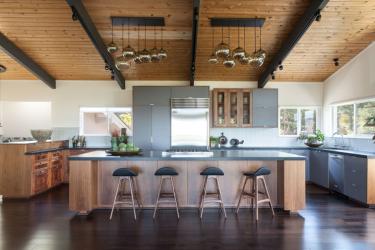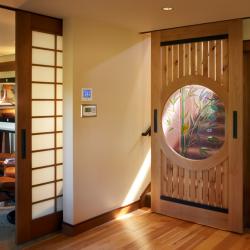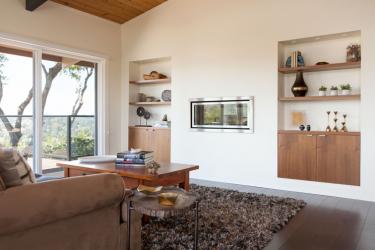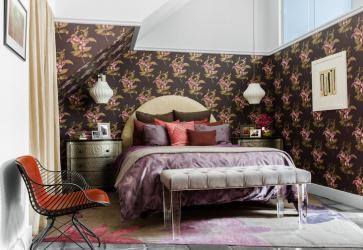Understanding Feng Shui: From an interior design perspective, feng shui focuses on balancing one’s energy with their surroundings, creating a calming, cohesive, productive environment. Cut down clutter and only add important, well-thought-out pieces in your Asian zen space. Avoid ornate and distracting details, and prioritize fewer but higher-quality pieces made of wood or other natural materials. Feng shui: a traditional practice originating from ancient China, which claims to use energy forces to harmonize individuals with their surrounding environment.
Earthy Materials: Continue to celebrate your connection with the outdoors through natural textiles; avoid synthetic options whenever possible to optimize comfort and relaxation. Linen, cotton and wool are all great natural options, and they can be used throughout the space as curtains, blankets and pillows.
Harmonious Hues: Nature is a central focus in this design style primarily because of the calm one feels when in proper harmony with their natural surroundings. To harness this sense of calm, use neutral natural hues in soft tones as your primary and secondary color choices, such as white, beige and gray. While the calming base is important, adding natural pops of color throughout a space can make it more vibrant and enjoyable! Look outside for inspiration, and choose bright tones such as blues, greens and oranges.
One With Nature: As much as we may love flashy flowers, their sometimes high-maintenance needs and distracting scents are not as popular in Asian zen interiors. However, plants are still important in this design style! Choose indoor plants such as bonsai trees, bamboo and snake grass to reinforce your color palette with greens. Don’t have a green thumb? Bring nature inside with soothing water features, stone decorations or even small, well-thought-out rock gardens and raking tables.
Sleek and Streamlined: Feeling grounded is crucial to maintaining a sense of balance. Japanese-style furniture, which is typically low-to-ground and sleek, keeps up a room’s visual flow without interrupting its sightlines. Choosing streamlined and unadorned furniture further enhances a space’s sense of minimalism.
Get In Shape: Circles are very important symbolically in many Asian cultures. It represents harmony, the balance of the yin and yang and the duality of nature, which is an essential part of Daoist and Chinese medical philosophies. Used in interior design, circles promote collaboration and openness, especially for tables and seating areas.
Importance of Light: Unlike many interior design styles, Asian zen interiors aren’t focused on statement light fixtures. For darker days and nights, avoid overhead lighting and anything fluorescent. Instead, opt for soft floor or table lamps with lanterns and candles to create a cozy atmosphere. If you live in an urban area and want to minimize hectic city noise, thick curtains can create intimacy while reducing noise from the street. If you aren’t concerned about noise pollution, then let the natural light in with sheer curtains.
Going Barefoot: Choose flooring that makes you feel comfortable going barefoot without slipping to feel more grounded in your spaces. A wooden parquet, resin floor finish or natural-tone carpet are all nature-centric options that can bring the outdoors into your home. Not looking to redo all your flooring? Adding rugs made out of natural materials such as pure cotton, soft wool or even straw helps create a comfortable balance in any space craving an Asian zen touch.
Screening Secrets: Feng shui does require some separation between spaces rather than the trendy open-floor-plan style of many modern American homes. Using screens and dividers in a space can create this separation without blocking natural light or cutting one space off from another. Choose sliding doors with a sliding screen where you can on the exterior so you can leave it open and enjoy a comfortable breeze from outside.











